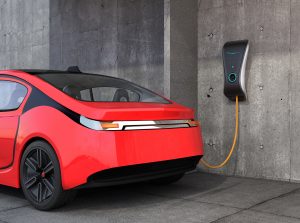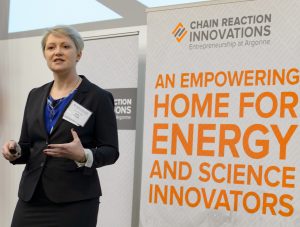
Supply chain stability is critical to many products used by U.S. manufacturers and consumers. A reliable supply chain means materials needed for goods are readily and regularly available. When they’re not, it creates a bottleneck that negatively affects production, creates shortages, and drives up prices.
Some of the metals, like cobalt, that are used in electric vehicle (EV) batteries have been identified as particularly vulnerable to supply chain disruptions. In fact, they’ve been classified as ‘critical materials’ by the Department of the Interior because their supply is essential to the economic and national security of the U.S.
Electric Battery Recycling
By 2025, the global stockpile of spent EV batteries is expected to exceed 3.4 million, compared with 55,000 in 2019 according to the Institute for Energy Research. And by 2040, more than half of new car sales and a third of vehicles across the globe are projected to be electric.
With the expansion of the EV market came the question of what to do with spent batteries. “Currently, used EV batteries cannot be recycled economically at scale,” says Kollhoff Mouat. Instead, they may be landfilled, which is costly and has an adverse environmental impact. Once in the landfill, the critical metals—used once in the battery—are of no future use.
If these metals can be reclaimed, there is less dependence upon unstable supply chains. The challenge is that recycling EV batteries has traditionally been energy intensive and cost prohibitive. EV battery disposal is viewed as a waste management challenge.
“Our aim was to make harvesting critical materials from the recycling waste stream more cost effective, particularly for EV batteries. We want to circularize the domestic supply chain of metal resource consumption.” Katie Kollhoff Mouat, CEO, NUMiX Materials
NUMIX Materials’ Unique Process
This is the puzzle that NUMiX Materials is intent on solving. The company currently focuses on cobalt and nickel recycling from EV batteries. If these rare metals can be harvested from spent batteries, it positively impacts the critical materials supply chain that depends upon overseas production for raw materials.
“Our aim was to make harvesting critical materials from the recycling waste stream more cost effective, particularly for EV batteries,” says Kollhoff Mouat. “We want to circularize the domestic supply chain of metal resource consumption.”
To do this, NUMiX developed a process that enables efficient separation of desirable metal ions from a commonly used acid solution at room temperature. The key is a proprietary absorbent that can be used with off-the-shelf equipment to reclaim valuable metals. Conventional technologies used to eliminate metals from waste streams have efficiencies of only a few percent on a mass basis and don’t work well long term, since the systems tend to generate mountains of waste.
NUMiX’s technology is fundamentally different. At the most basic level, it behaves like a ‘super sponge’ that only absorbs metal ions. Compared to conventional filtration media, their material takes up these metals, more than doubling its weight. The saturated material, now full of raw source metals, is shipped to producers of new battery materials, thus closing the supply chain circle.

“The capacity of the compound is markedly better than current options,” notes Kollhoff Mouat. NUMiX’s material results in a compound consisting of almost 50 percent target metals compared to other processes, which may harvest as little as one percent by mass. This means the NUMiX process is commercially viable. “The goal is to reduce the overall cost of battery recycling.”
Recently NUMiX has conducted a successful lab-scale trial at Argonne that showed high uptake into the NUMiX absorbent from a concentrated solution of cobalt and nickel. As a result, NUMiX is poised to begin scaling up. Where previous testing used synthetic metal solutions, the next phase will use real-world materials.
“Our ultimate objective is the efficient use and re-use of materials,” Kollhoff Mouat points out. NUMiX is well on its way to achieving that goal, not only securing the supply chain but also reducing waste and minimizing adverse environment impacts.
Katie Kollhoff Mouat is a member of cohort 3, the third class of innovators to participate in the Chain Reaction Innovations program at Argonne National Laboratory.
Chain Reaction Innovations provides innovators with laboratory tools and seed capital as well as the technical, business and manufacturing expertise needed to rapidly mature their early-stage technologies. The goal is to enable them to attract the long-term capital and commercial partners needed to scale and launch into the marketplace.
CRI is part of the Lab-Embedded Entrepreneurship Programs supported by the U.S. Department of Energy’s Office of Energy Efficiency and Renewable Energy (EERE). EERE created the Lab-Embedded Entrepreneurship Programs to provide an institutional home for innovative postdoctoral researchers to build their research into products and train to be entrepreneurs. The two-year program for each innovator is funded by EERE’s Advanced Manufacturing Office (AMO).

